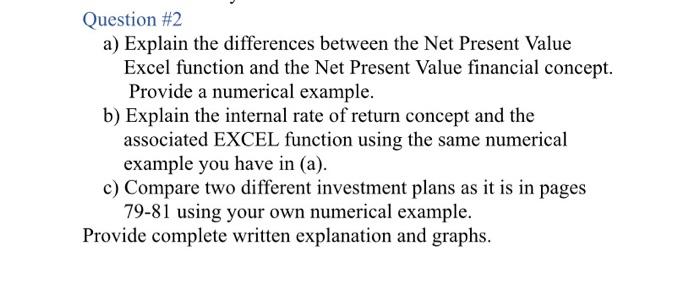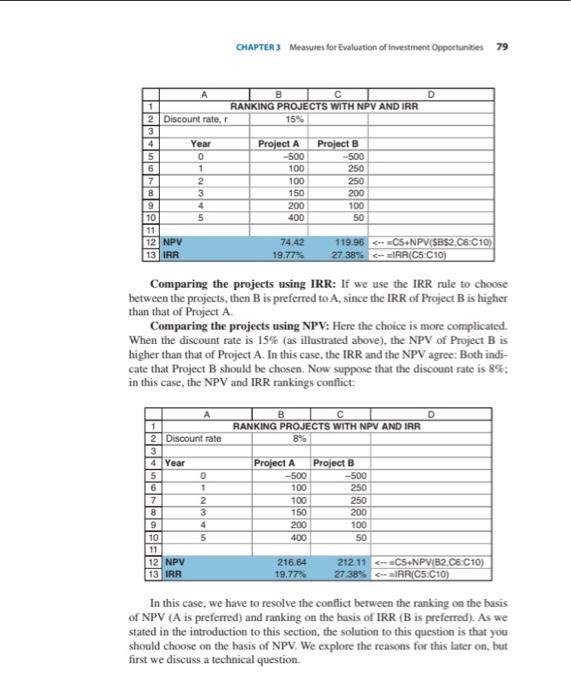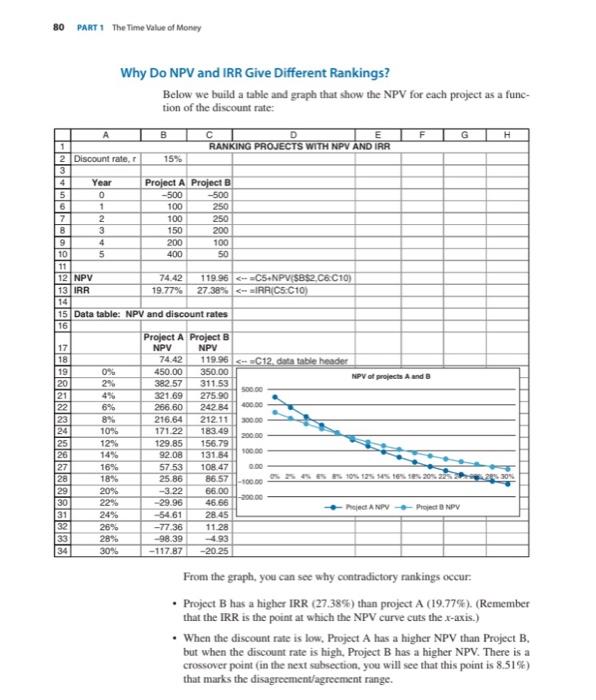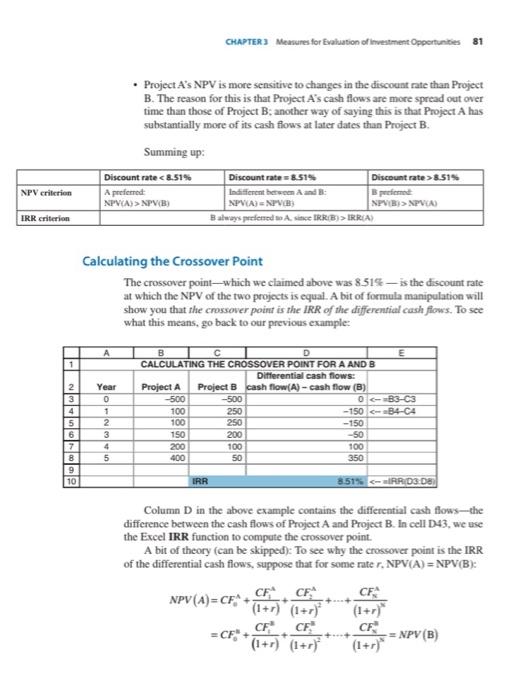Question #2 a) Explain the differences between the Net Present Value Excel function and the Net Present Value financial concept. Provide a numerical example. b) Explain the internal rate of return concept and the associated EXCEL function using the same numerical example you have in (a). c) Compare two different investment plans as it is in pages 79-81 using your own numerical example. Provide complete written explanation and graphs. CHAPTER 3 Measuies for Evaluation of investment Opportunities 79 Comparing the projects using IRR: If we use the IRR rule to choose between the projects, then B is preferred to A, since the IRR of Project B is higher than that of Project A. Comparing the projects using NPV: Here the choice is more complicated. When the discount rate is 15% (as illustrated above), the NPV of Project B is higher than that of Project A. In this case, the IRR and the NPV agree: Both indicate that Project B should be chosen. Now suppose that the discount rate is 8% : in this case, the NPV and IRR rankings conflict: In this case, we have to resolve the conflict between the ranking on the basis of NPV (A is preferred) and ranking on the basis of IRR (B is preferred). As we stated in the introduction to this section, the solution to this question is that you should choose on the basis of NPV, We explore the reasons for this later on, but first we discuss a technical question. Why Do NPV and IRR Give Different Rankings? Below we build a table and graph that show the NPV for each project as a func- From the graph, you can see why contradictory rankings occur: - Project B has a higher IRR (27.38\%) than project A (19.77\%). (Remember that the IRR is the point at which the NPV curve cuts the x-axis.) - When the discount rate is low, Project A has a higher NPV than Project B. but when the discount rate is high, Project B has a higher NPV. There is a crossover point (in the next subsection, you will see that this point is 8.51% ) that marks the disagreement/agreement range. - Project A's NPV is more sensitive to changes in the discount rate than Project B. The reason for this is that Project A's cash flows are more spread out over time than those of Project B : another way of saying this is that Project A has substantially more of its cash flows at later dates than Project B. Samming up: Calculating the Crossover Point The crossover point - which we claimed above was 8.51% - is the discount rate at which the NPV of the two projects is equal. A bit of formula manipulation will show you that she crossover point is the IRR of the differential cash flows. To see what this means, go back to our previous example: Column D in the above example contains the differential cash flows-the difference between the cash flows of Project A and Project B. In cell D43, we use the Excel IRR function to compute the crossover point. A bit of theory (can be skipped): To see why the crossover point is the IRR of the differential cash flows, suppose that for some rate r. NPV (A)=NPV(B) : NPV(A)=CFss+(1+r)CF1s+(1+r)2CF2s++(1+r)CFss=CF6k+(1+r)CFsk+(1+r)2CF2k++(1+r)sCFsN=NPV(B)










